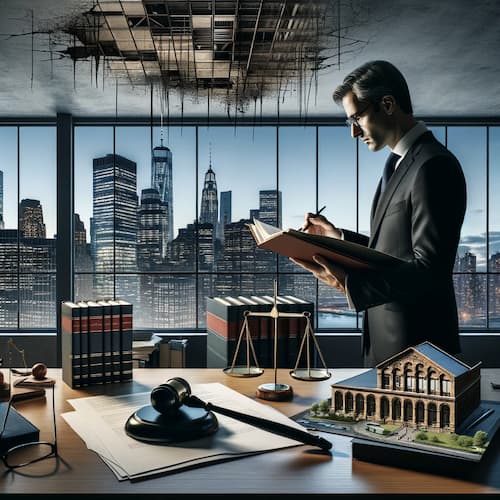When it comes to slip and fall accidents, proving negligence is crucial in establishing liability and seeking compensation for injuries and damages. In this blog post, we will delve into the process of proving negligence in slip and fall cases, highlighting the key elements required to build a strong legal case. We will also introduce Michael J. Redenburg, a renowned attorney known for his expertise in handling slip and fall accident cases.
- Understanding the Elements of Negligence in Slip and Fall Accidents
- Duty of Care
– Explain the concept of duty of care, emphasizing the responsibility of property owners or occupiers to maintain safe premises for visitors.
– Discuss how the duty of care varies depending on the relationship between the injured party and the property owner, such as invitees, licensees, or trespassers.
- Breach of Duty
– Explore how a breach of duty occurs when the property owner fails to fulfill their obligation of maintain safe conditions.
– Discuss common examples of breach of duty in slip and fall cases, such as failing to address hazardous conditions, neglecting regular maintenance, or insufficient warning signage.
- Causation and Damages
– Highlight the importance of establishing a causal connection between the breach of duty and the resulting injuries.
– Discuss the types of damages that may be pursued in slip and fall cases, including medical expenses, lost wages, pain and suffering, and future damages.
- Gathering Evidence to Support the Claim of Negligence
- Documenting the Accident Scene
– Provide guidance on the immediate steps to take after a slip and fall accident, including documenting the scene, taking photographs of the hazardous condition, and identifying any witnesses.
– Emphasize the importance of preserving evidence, as conditions may change quickly or be remedied by the property owner.
Witness Testimonies
– Discuss the significance of obtaining witness statements to support the claim of negligence.
– Provide guidance on how to approach witnesses, ask the right questions, and ensure their cooperation throughout the legal process.
- Surveillance Footage and Other Evidence
– Explore the role of surveillance footage, if available, in proving negligence in slip and fall cases.
– Discuss the potential value of other forms of evidence, such as maintenance records, inspection reports, and expert opinions.
The Importance of Skilled Legal Representation: Michael J. Redenburg
- Experience in Handling Slip and Fall Cases
– Introduce Michael J. Redenburg as a highly experienced attorney specializing in slip and fall accident cases.
– Highlight his track record of success in building strong cases and securing favorable outcomes for his clients.
- Thorough Investigation and Case Preparation
– Discuss Michael J. Redenburg’s meticulous approach to gathering evidence, conducting comprehensive investigations, and building a strong legal strategy.
– Emphasize his attention to detail in identifying the key elements of negligence and utilizing the evidence effectively.
- Effective Negotiation and Advocacy
– Highlight Michael J. Redenburg’s negotiation skills and his ability to advocate for his clients’ rights and interests.
– Discuss his commitment to obtaining fair compensation for his clients through strategic negotiations with insurance companies or, if necessary, through litigation.
Conclusion:
Proving negligence is essential in building a strong case in slip and fall accidents. By understanding the elements of negligence and gathering compelling evidence, individuals can increase their chances of establishing liability and seeking fair compensation. With the expertise and dedication of an experienced attorney like Michael J. Redenburg, victims of slip and fall accidents can rely on skilled legal representation to navigate the complexities of their cases and pursue the justice and compensation they deserve



